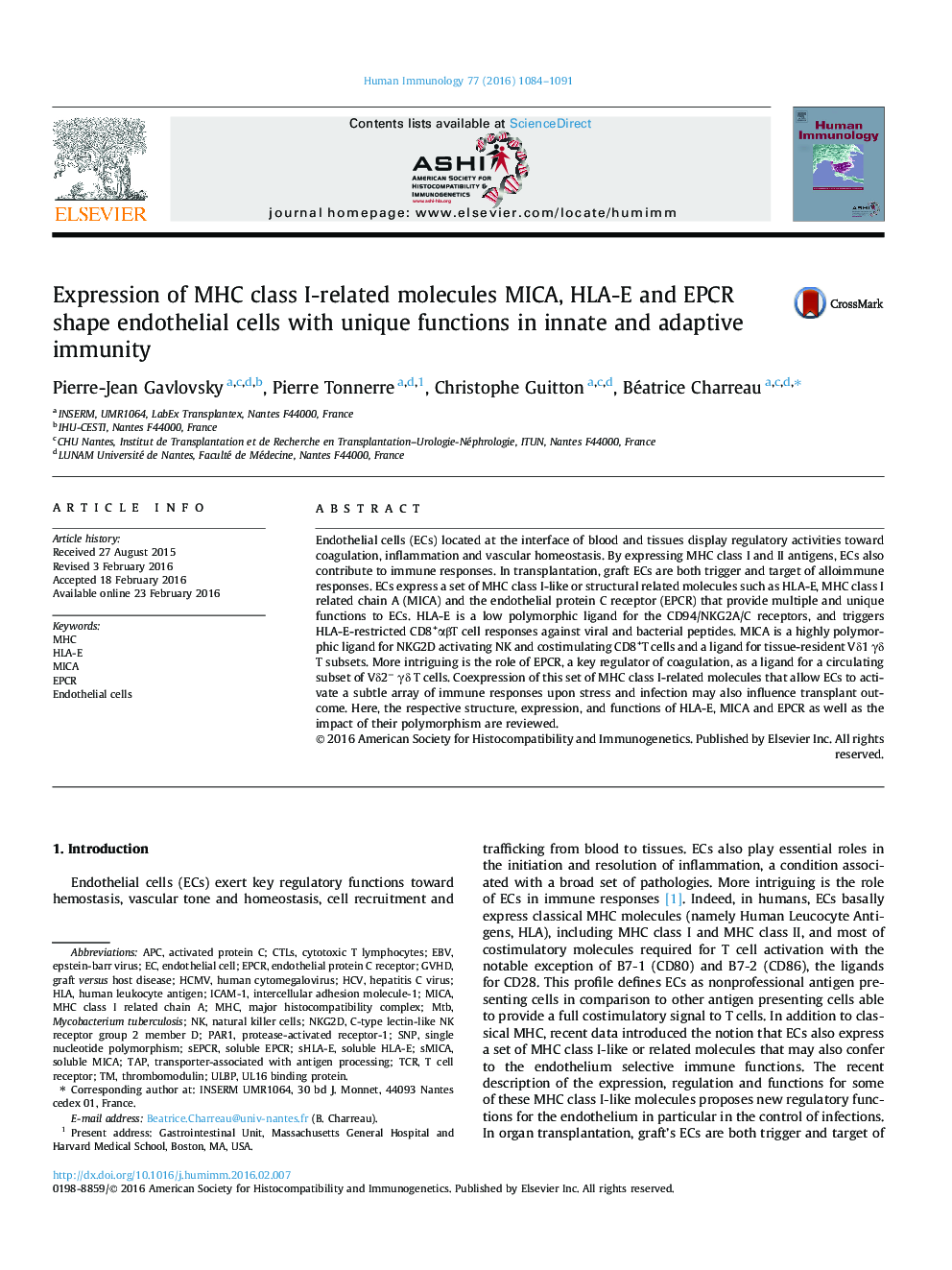| Article ID | Journal | Published Year | Pages | File Type |
|---|---|---|---|---|
| 5666332 | Human Immunology | 2016 | 8 Pages |
Endothelial cells (ECs) located at the interface of blood and tissues display regulatory activities toward coagulation, inflammation and vascular homeostasis. By expressing MHC class I and II antigens, ECs also contribute to immune responses. In transplantation, graft ECs are both trigger and target of alloimmune responses. ECs express a set of MHC class I-like or structural related molecules such as HLA-E, MHC class I related chain A (MICA) and the endothelial protein C receptor (EPCR) that provide multiple and unique functions to ECs. HLA-E is a low polymorphic ligand for the CD94/NKG2A/C receptors, and triggers HLA-E-restricted CD8+αβT cell responses against viral and bacterial peptides. MICA is a highly polymorphic ligand for NKG2D activating NK and costimulating CD8+T cells and a ligand for tissue-resident Vδ1 γδ T subsets. More intriguing is the role of EPCR, a key regulator of coagulation, as a ligand for a circulating subset of Vδ2â γδ T cells. Coexpression of this set of MHC class I-related molecules that allow ECs to activate a subtle array of immune responses upon stress and infection may also influence transplant outcome. Here, the respective structure, expression, and functions of HLA-E, MICA and EPCR as well as the impact of their polymorphism are reviewed.
